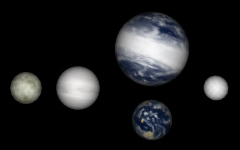
 |
| Right Ascension | 06h 10m |
|---|---|
| Declination | −74° 45' |
| Distance | 33.09 ± 0.15 ly |
| Spectral Class | G5V |
| Estimated Mass | 0.87 × Sol |
| Luminosity | 0.833 × Sol |
| Alpha Mensae as seen from Sol. |
Sol as seen from Alpha Mensae. |
|---|---|
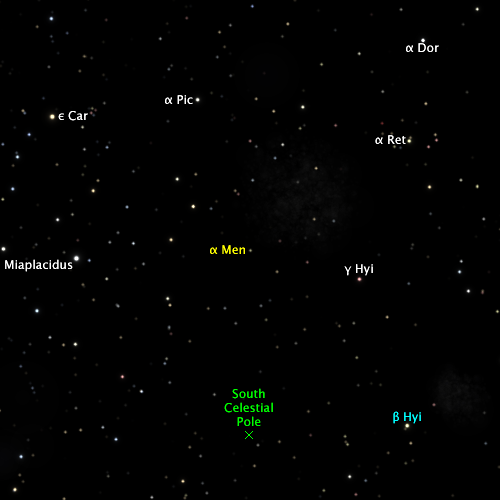 |
 |
| Star | Magnitude | Distance |
|---|---|---|
| Canopus | −0.84 | 278.6 |
| Achernar | −0.03 | 112.0 |
| Rigel | 0.15 | 850.4 |
| Betelgeuse | 0.44 | 494.5 |
| Beta Centauri (Hadar) | 0.47 | 366.8 |
| Alpha Crucis (Acrux) | 0.58 | 294.2 |
| Gamma Crucis (Gacrux) | 0.93 | 65.2 |
| Beta Carinae (Miaplacidus) | 0.95 | 81.4 |
| Spica | 0.97 | 248.5 |
| Delta Velorum | 1.00 | 52.3 |
| Arcturus | 1.00 | 59.5 |
| Destination | Distance |
|---|---|
| 82 Eridani | 21.1 |
| Beta Hydri | 13.0 |
The Alpha Mensae system has five terrestrial planets (counting the double planet of Bluster and Tempest as two planets). The system has no gas giants but does have a planetoid belt.
| Planet | SMA (AU) |
Orbital Period |
e | Equatorial Diameter (km) |
Mass (Earths) |
Density (g/cm3) |
Gravity (Earth g) |
Atmospheric Pressure (Earth=1) |
Sidereal Day |
Mean Solar Day |
Axial Tilt |
Known Moons |
|---|---|---|---|---|---|---|---|---|---|---|---|---|
| Pulvia | 0.3339 | 75.458 d | 0.0115 | 8497 | 0.3067 | 5.70 | 0.6907 | 0.165 | 75d 10h 59.6m | Synchronous | 00° 14.7' | 0 |
| Nimbus | 0.6298 | 195.46 d | 0.0235 | 11450 | 0.6633 | 5.04 | 0.8222 | 34.0 | 5d 06h 01.4m | 5d 09h 30.2m | 08° 39.0' | 0 |
| Bluster | 0.9426 | 357.93 d | 0.0774 | 19750 | 3.811 | 5.66 | 1.589 | 43.0 | 21h 44.1m | 21h 47.4m | 18° 01.9' | 1 |
| Tempest | 10700 | 0.5434 | 5.08 | 0.7720 | 0.903 | 21h 44.1m | 21h 47.4m | 18° 03.6' | ||||
| Frigor | 2.891 | 5.2631 y | 0.0848 | 6813 | 0.1008 | 3.70 | 0.3532 | 0.0239 | 12h 35.0m | 12h 35.2m | 37° 59.1' | 2 |
| Name | Diameter (km) |
Period (days) |
Semimajor Axis (km) |
Ecc | Inc |
|---|---|---|---|---|---|
| Natural Satellites of Bluster-Tempest | |||||
| Merana | 2321 | 7.204 | 257300 | 0.0249 | 0.88 |
| Natural Satellites of Frigor | |||||
| Frigor I | 309 | 3.581 | 46020 | 0.0006 | 0.03 |
| Frigor II | 149 | 8.955 | 84790 | 0.0031 | 0.76 |
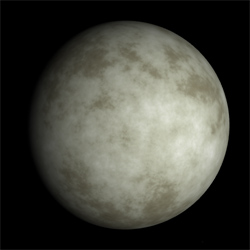 |
The closest planet to Alpha Mensae is Pulvia, which is a Mars-sized planet with a thin, dusty atmosphere. Like most planets that orbit close to their stars, Pulvia is tidally locked to its sun. Pulvia often has intense dust storms that blanket the planet.
The atmosphere of Pulvia is slowly being eroded by particle winds from the parent star. Although the dusty atmosphere circulates the heat of the star efficiently over the dark side of the planet, the atmosphere is close to the minimum density at which such heat circulation is no longer able to prevent the atmosphere from freezing out on the dark side. Soon the planet will be transformed from a living planet with dust storms into a dead planet without weather of any kind.
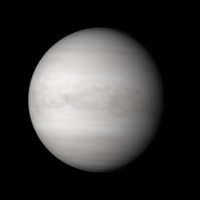 |
Nimbus is a planet with a thick, very toxic atmosphere. The planet is shrouded by clouds that block views of the surface. Nimbus has extensive active vulcanism, which contributes toxic gases to its atmosphere. The surface has several active regions where the crust is undergoing resurfacing and is covered by fresh lava flows.
Nimbus orbits far enough from its star to maintain a free rotation, but is close enough that its rotation has been slowed appreciably. Nimbus rotates about once every five and a quarter days.
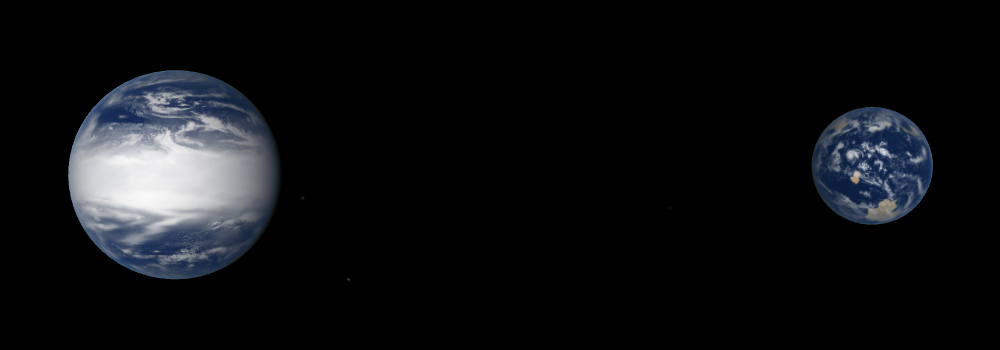 |
Bluster and Tempest are a double planet orbiting Alpha Mensae. Tempest is a habitable Earth-sized moon orbiting the larger ocean world of Bluster. The two planets have synchronous rotation, with each planet always presenting the same face to the other.
Tempest has microbial sea-based life and an atmosphere somewhat more rarefied than the Earth’s atmosphere that is composed mainly of nitrogen (82.06%), oxygen (9.83%), carbon dioxide (7.03%) and argon (1.07%). There is little life on the land. Most of the land-based life that does exist is primarily found in the lakes and rivers of Tempest. Tempest is not habitable by humans because there is too much carbon dioxide in the atmosphere.
Bluster has a very thick nitrogen-carbon dioxide atmosphere and oceans kilometres deep. Although no life has been found on Bluster, it is not known for sure whether Bluster possesses life.
These planets have a large moon orbiting them in a wide orbit.
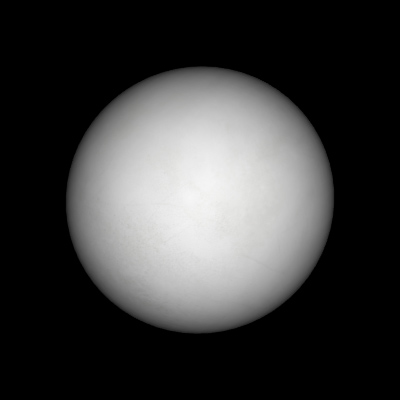 |
The outer reaches of the Alpha Mensae system are populated by a number of icy worlds, of which Frigor is the largest that is known. In composition it is similar to the moon Europa in the Solar system, being an ice-covered world with a global ocean. The global ocean gives way to a deeper layer of ice, and is warmed from below by the internal heat of the planet.